Wistful and grey, Galicia is also a land of lush valleys dotted with pine and eucalyptus trees and deep green rolling hills. Discover ten of its most charming small towns and villages, characterised by unchanging bucolic ways and the picturesque melancholy of overcast skies – be sure to pack a raincoat!
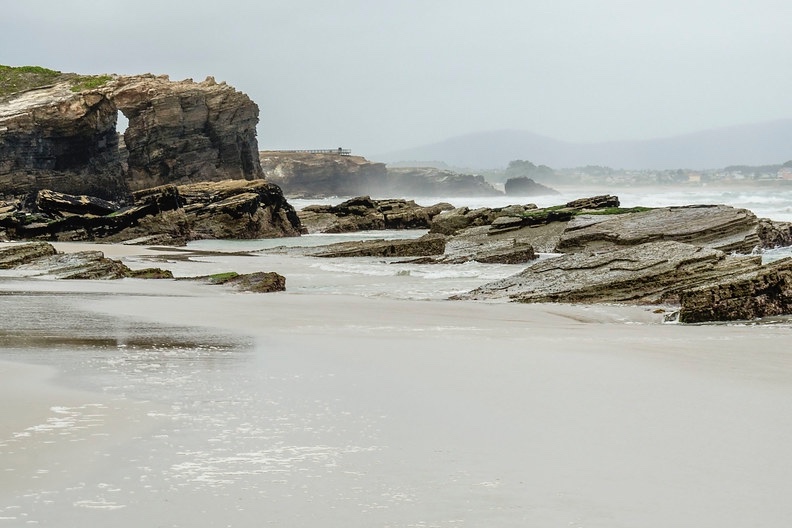
A rainy day at the famous Praia das Catedrais (Photo: Guillén Pérez via Flickr / CC BY 2.0)
Famous for its rugged coastline exposed to the North Atlantic and its warm-hearted locals with musical accents, this north-western region of Spain is a far outcry from the country’s crowded beach resorts.
Galicia’s drizzly climes and wild landscapes could be likened to those of Scotland – and the similarities don’t end there. The presence of the Celts in Galicia dates back to ancient times, with their influence still palpable today. Village hilltops are dotted with roundhouse settlements still in use, and the lamenting melody of the bagpipe prevails at local festivities.
If you’ve already decided on visiting this undiscovered region as your next travel destination (or are looking for that extra nudge before doing so), here’s a selection of some of Galicia’s towns and villages that, to this day, retain an authentic, rustic charm.
Baiona
It was this fishing town on Galicia’s eastern coast that first heard news of the New World as announced by Alonso Pinzón in 1493. A full-size replica of the explorer’s magnificent caravel sailing ship, La Pinta, can be found moored alongside yachts and fishing boats in the town’s harbour, making for a postcard-perfect snap of your stay here.
Equally as impressive is Baiona’s grand 16th-century city wall. A walk along this well-preserved fortification promises views of the Atlantic with the Cíes Isles nature reserve just visible on the horizon. When dinnertime comes around, you’re be spoiled for choice. At the heart of the town is its Casco Vello (Old Quarter), replete with charming eateries serving tapas and refreshingly dry Albariño wine – many of these places are jam-packed with Spanish tourists and locals, especially during the summer months.
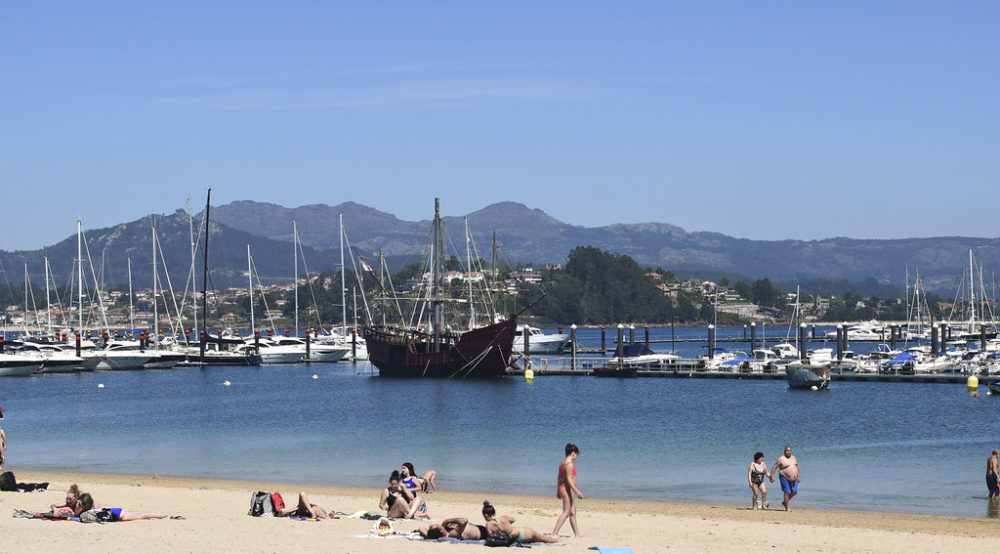
A replica of La Pinta sailing ship in Baiona’s harbour (Photo: Elisa G. Fernández via Flickr / CC BY 2.0)
Combarro
The delightful Combarro sits on the banks of the River Pontevedra. Dubbed the most beautiful village in Galicia, the charm of its traditional fishing houses set above the ebb and flow of the Atlantic tides is difficult to resist. The village’s major lure is its numerous waterfront hórreos. These raised granite granaries are a symbol of rural Galicia, and, from a distance, can be mistaken for stone chapels or memorials to the dead.
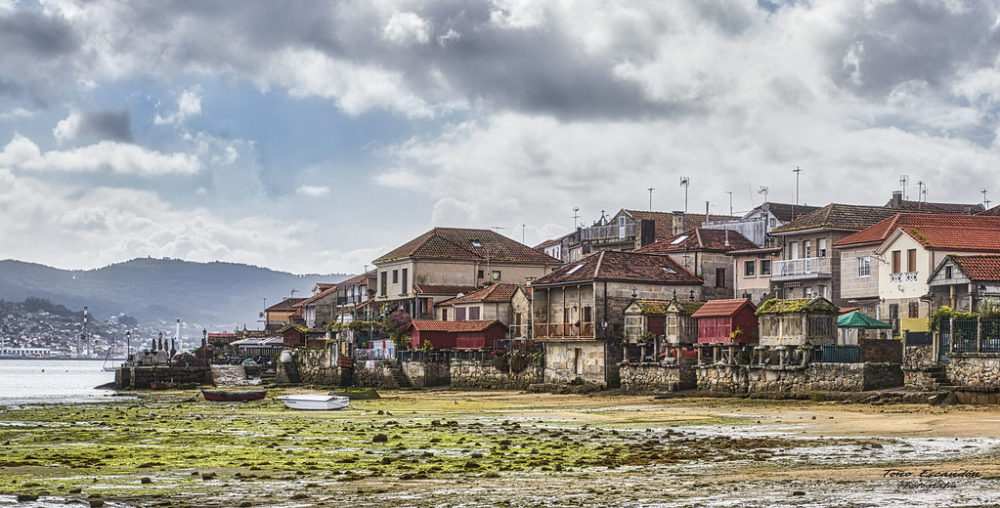
Combarro’s raised stone houses and granaries (Photo: Toño Escandón via Flickr / CC BY 2.0)
Muxia
On Galicia’s unforgiving Costa da Morte – a coastline named on account of the lives its rough seas and unforgiving cliff faces claim every year – lie several quintessential Galician villages, Muxia among them. The cape where Muxia stands is headed by the Santuario da Virxe da Barca. Legend has it that it was here at this church where the Virgin appeared to Santiago – a story that has inspired many pilgrims on St James’ Way to make a detour to these rugged headlands.
Back in the village, a short walk up the Miradoiro do Corpiño promises views of the scattering of stone houses Muxia is home to, their russet-coloured roofs, and the foamy waters on either side. Then end your day with a visit to Lonxa d’Álvaro restaurant, where seafood specialities abound – the local navajas (grilled razor clams) doused in white wine sauce are particularly divine.
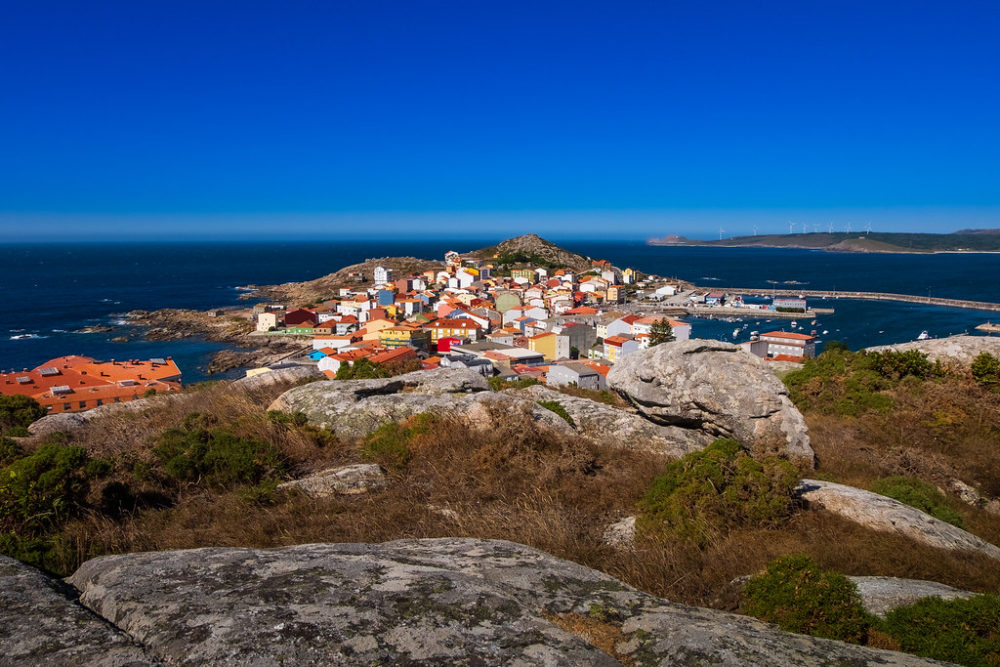
Views of Muxia from the Corpiño viewpoint on an unusually sunny day (Photo: J. A. Díaz via Flickr / CC BY 2.0)
Camariñas
On the other side of the Ría do Porto from Muxia lies Camariñas. With a quaint harbour and uncrowded promenade, it’s a town that lends itself well to a slow-paced afternoon. The village is renowned for its bobbin lace makers and their intricately braided cloth; its lace museum pays homage to this age-old craft. Nearby is the Cabo Vilán lighthouse, which sits atop a dramatic rocky crag and offers magnificent unimpeded sea views. The journey from Muxia to here takes you across the hinterland of the Costa da Morte estuary and offers an up close look at rural Galician life.
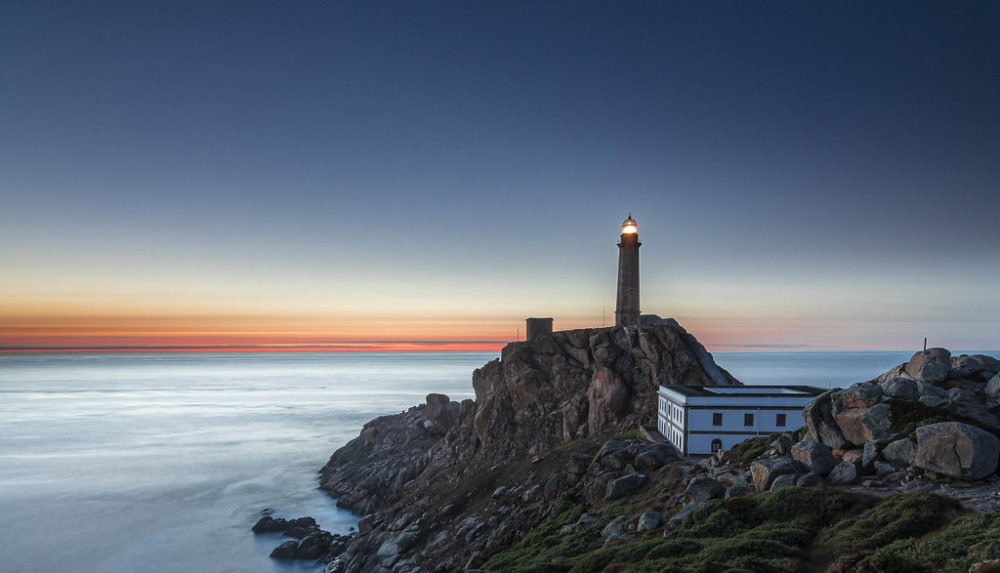
The sun setting on the Cabo Vilán lighthouse (Photo: José Ramón Dominguez via Flickr / CC BY 2.0)
Mondoñedo
In the words of Álvaro Cunqueiro – Galician playwright, poet, and novelist born in this otherworldly town – Mondoñedo is melancholy and silence. Once the capital to one of the region’s seven kingdoms, today it’s home to less than 5,000 people. Its rich heritage, though, includes a 13th-century cathedral with a kaleidoscopic rose window and the Barrio dos Muíños, an historic district criss-crossed by waterways and lined by the old stone houses of artisans. Much of their trade is still kept alive in the ancient crafts of pottery and blacksmithing, and more. Pop in to any of the area’s bodegas for a refreshing glass of Galician-grown wine, served with a complimentary bubbling hot tapa of caldeirada (fish stew) – the perfect antidote to a drizzly day.
The town is an excellent base point for hikers wanting to explore the surrounding meadows, or those wishing to visit the arresting Praia das Catedrais, with its immense sea stacks eroded naturally by the sea to form majestic rocky archways.
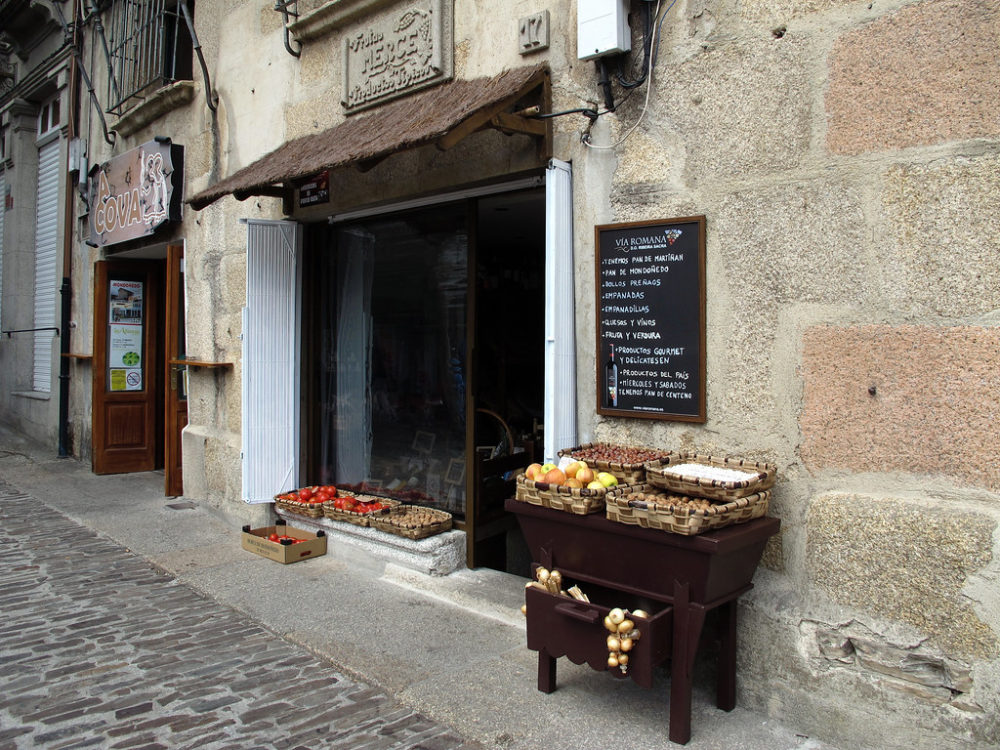
A local artisan shop in Mondoñedo (Photo: Rafa Gallegos via Flickr / CC BY 2.0)
Betanzos
Another former capital of the Ancient Kingdom of Galicia, Betanzos is set atop a small hill on the site of an ancient fort. This village in the northern Rías Altas region is steeped in medieval history and brimming with Gothic elements. Passing through one of the two remaining gates of its 15th century city wall is like travelling back in time.
Betanzos is considered by some as being home to Spain’s best tortilla de patatas. After spending the morning basking in the history of its steep cobbled streets, pull up a stool in one of its many bars and restaurants to try it for yourself. The best of all could be argued to be that served at O Poto – this Spanish omelette is firm on the outside, soft on the inside, and the colour of the midday sun.
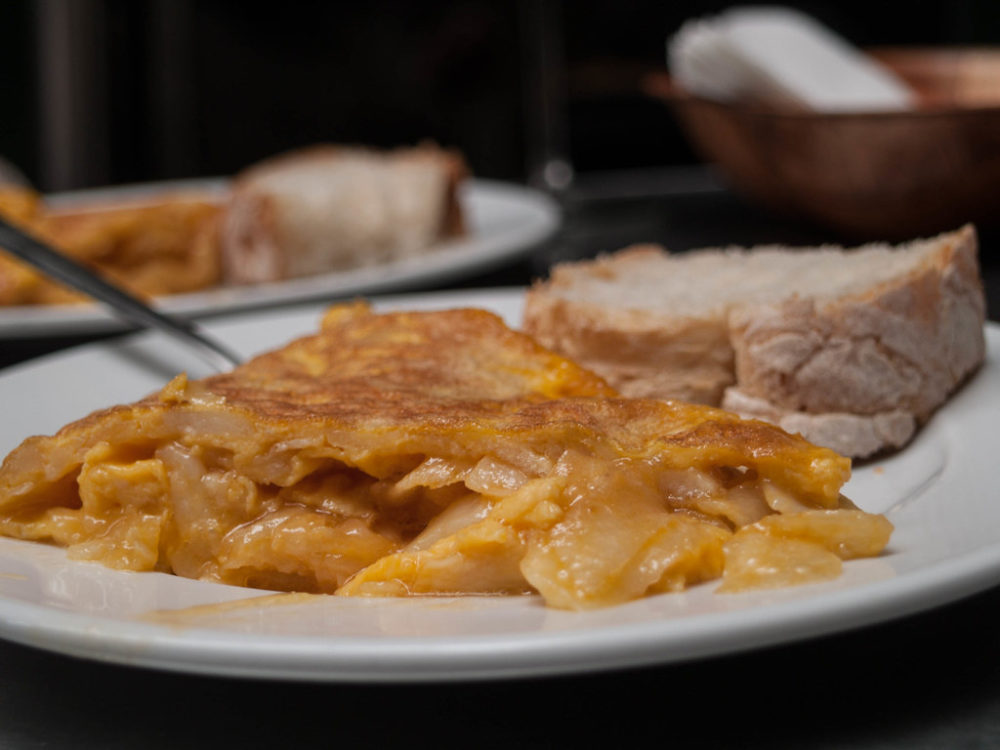
Tortilla served with warm crusty bread in Betanzos (Photo: Daniel Candal Castro via Flickr / CC BY 2.0)
Ribadeo
Further along Galicia’s northern Lugo coastline, eroded by fierce winds and rainstorms, lies Ribadeo. It’s located on the banks of the River Eo – both the natural border between Galicia and Asturias and a rich natural habitat for multiple species of bird, fish, and estuarine flora. Ribadeo is a hotspot in summer for Spaniards seeking cooler climates and a cool caña of the local Estrella Galicia beer.
High among reasons to visit this blustery township include its striking colonial-style manor houses, its exquisitely preserved, colourful old quarter, and the nearby Isla Pancha – the location of Spain’s first lighthouse-hotel with several possibilities for hiking. What’s more, not far from Ribadeo is Sargadelos; the location of an 18th-century ceramics factory where artisans continue to make beautifully decorated blue and white china.
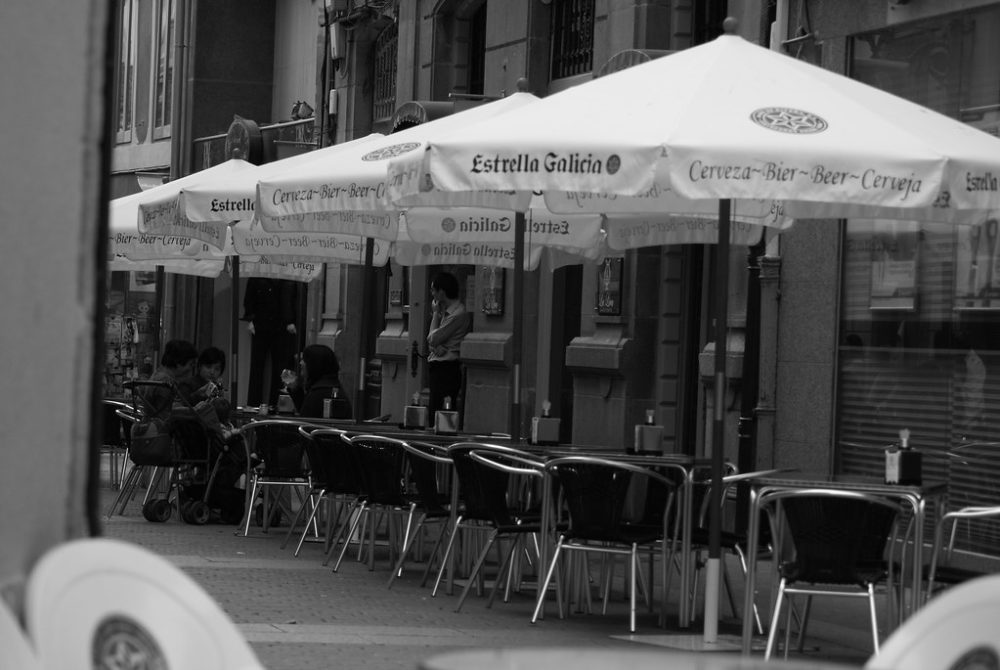
Bar terraces before rush hour in Ribadeo (Photo: Tito Villarmea via Flickr / CC BY 2.0)
Piornedo
Heading inland towards Galicia’s rustic farmlands, you’ll find Piornedo in the Dos Ancares National Reserve. A pre-Roman Celtic settlement, Piornedo today is more a hamlet than a village, and is the perfect spot to stretch your legs before continuing on your journey. Get there early in the morning to see the mist grazing the surrounding low mountains. As the round thatch-roofed cottages of Piornedo come into view, you’ll know you’ve come across something special. These preserved ancient stone dwellings – known as pallozas – are representative of Galicia’s humble lifestyle. There’s also one that’s been reclaimed as a museum so visitors can experience this for themselves.
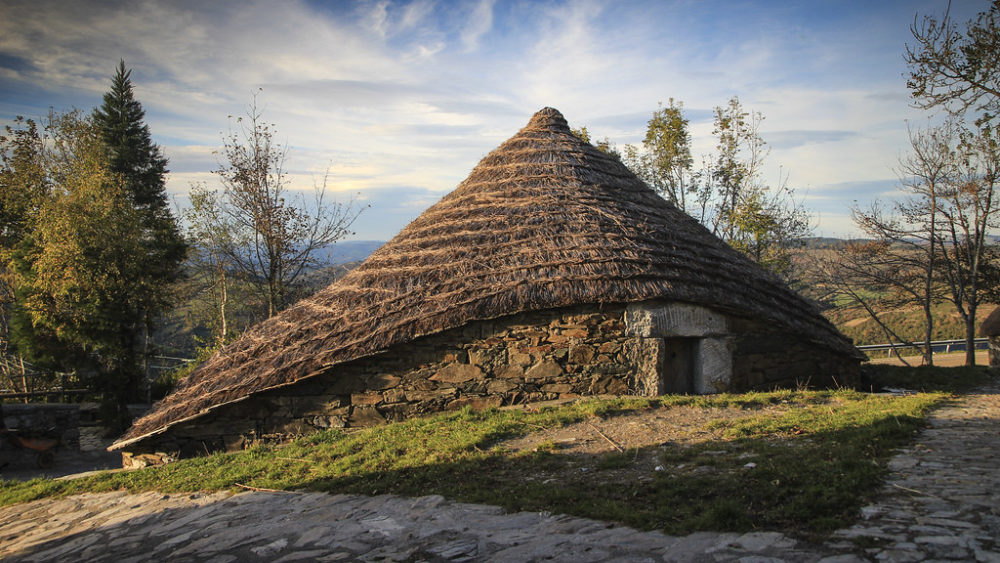
A traditional palloza in Piornedo (Photo: Manu Varela via Flickr / CC BY 2.0)
Verín
The south-eastern town of Verín stands in a large valley close to Galicia’s border with Portugal and is famous for being host to ancient spas with healing thermal waters and a burgeoning wine culture. Close by is Castillo de Monterrei with views of the lush green countryside below. Today, this stunning castle complex houses a modern parador. Don’t leave the area without trying the local Monterrei wines and Galicia’s justly famous pulpo a feira. As the local Gallegos say, octopus may be fished on the coast, but inland is where it’s cooked best.
The village’s springtime Carnival celebrations (known as Entroido in Galician) combine revelry and tradition, bolstered by the extravagantly dressed, masked cigarróns. A note to keep in mind: avoid the main square, unless you consider getting caught up in a fariñada (flour fight) the perfect way to fully experience Galician culture.
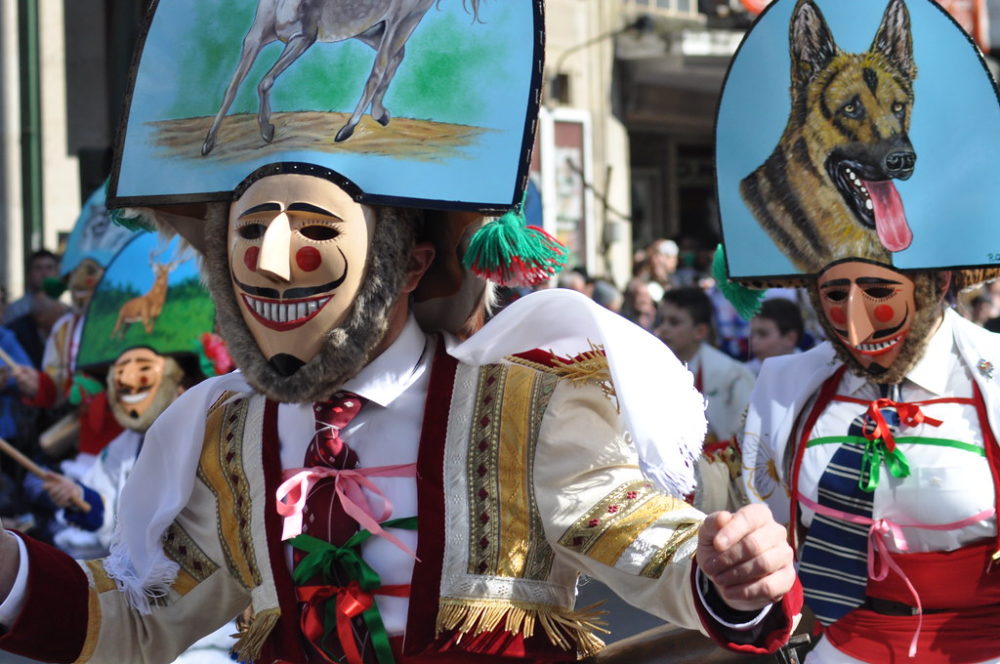
Masked cigarróns during Carnival celebrations in Verín (Photo: Adri Bouzada via Flickr / CC BY 2.0)
Allariz
A mere half-hour drive away is the quaint Allariz, just south of the region’s capital, Ourense. Its delightful old quarter is best explored on foot and its main square offers the perfect spot for a coffee. With castle ruins, a city wall, several museums and a Jewish quarter, Allariz has something for everyone. Locals particularly enjoy its yearly garden festival, an initiative that fills the village with colour and excitement, above all when the votes for the best design are cast.
As this journey comes to an end, it’s worth noting that getting to Galicia has just been made that bit easier. In addition to its airports in Santiago, Vigo and A Coruña, the region has recently been added to Spain’s high-speed train (AVE) map, proof that it is finally being recognised as a worthy stop on a visit to the Iberian Peninsula.
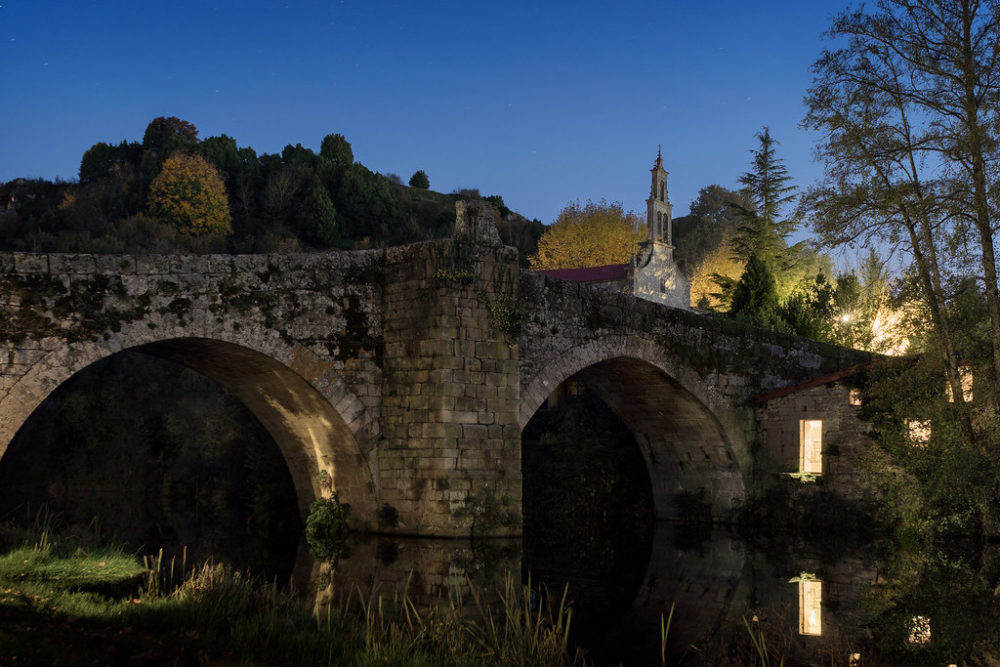
The Roman bridge in Allariz (Photo: Charlón via Flickr / CC BY 2.0)